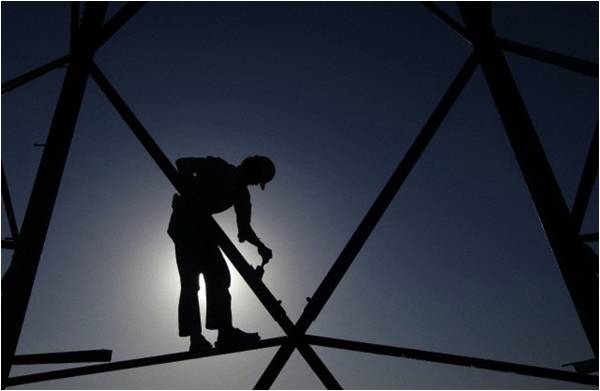
Pakistan’s economic progress seems shaky. Growth, for most part of Pakistan’s history, has been mired by a number of missed opportunities, despite promises. The country’s potential is repeatedly highlighted owing to regional globalization. Pakistan stands to benefit from regional trade as powers like China, India and the Central Asian states achieve a higher growth trajectory. The resilience of the MENA region also provides a buffer through increased inflow of remittances and credit lines extended to a growing labor force. There will always be spillover growth through regional development and that is what most economic pundits are hoping for. However, economic management on the domestic front has been a challenge and a serious impediment to sustainable growth. It will take a committed leadership with an enlightened vision to reap the full benefits of regional trade and development to deal with this challenge.
In the recent budget statement presented by Finance Minister Ishaq Dar, the government does not seem to be holding its ground. A number of targets were missed. Is the finance minister moving with caution, saving his best for the second half of his administration? Or is there sufficient bite in the argument that the economic slippage and the lack of steam in the domestic economy has hurt the government’s plans?
A budget of around Rs 4,451 billion was presented, posting an increase of 3.5 percent over the previous fiscal year. Pakistan registered a fairly modest growth of 4.24 percent, well short of its target of 5 percent for the fiscal year. According to Jeffery Franks, former Pakistan mission chief of IMF, “Pakistan’s growth looks promising, however it is not enough to substantially improve income levels because of the high population growth rate.”
Worries loom large over Pakistan’s debt position. Though marginal improvements were witnessed in domestic debt, external debt is a major concern as capital flight continues, thanks to the fragile appetite of foreign investors.
The saving grace of the year was the successful issuance of a Sukuk bond, attracting more than a billion dollars, pushing up the country’s forex reserves to a fairly comfortable level. The current account deficit was moderate, courtesy a reduction in the global oil prices. Inflation was contained, reaching a decade low of 2.5 percent. But the credit markets did not respond to the lowering of the inflation, and the economy failed to take off.
Sluggish growth in both agriculture and manufacturing sectors is being seen as the culprit. This makes sense as agriculture makes for 21 percent of the GDP, whereas manufacturing contributes another 13 percent to the national account. Any shortfalls in these areas will most likely hurt the macro economy unless Pakistan diversifies its growth dynamics by creating more demand for services and engaging a massive labor force that it has at its disposal.

The finance ministry has failed once again to address Pakistan’s structural weaknesses. Persistent weakness in the energy sector has increasingly taken a toll on the country’s economic prospects. One may argue that with a growing labor force and depressed demand for services, infrastructure constraint is perhaps the largest concern. Energy is the driving wheel of the domestic economy. Lack of adequate water management for irrigation and power for industry will continue to dampen the country’s growth potential in agriculture, large scale manufacturing and the services sector. Structural impediments like these clearly have no quick-fix solutions, and this could well be the reason behind the government’s pessimism in the short term. The supply-demand gap in the power sector is widening by the day and the circular debt continues to drain the economy. As per conservative estimates, intermittent load shedding of both power and gas costs the economy anywhere between $5 billion and $10 billion annually. This is a direct impact. Indirect externalities could be far greater as virtually anything we do is inevitably linked to a sustainable energy supply. Therefore it is imperative to realize that for Pakistan to grow briskly and keep pace with other regional powers, its energy needs must be addressed immediately.
Another structural impediment to growth is fiscal consolidation. Although some consolidation efforts were visible on the expenditure side, revenue mobilization remains a worry, as the tax base is not wide enough. The tax structure is not consumer friendly and in the absence of any major reforms, Pakistan’s tax designs will continue to feed on the middle and the lower middle class. Another prominent weakness of the country is its growing population, which could also go in Pakistan’s favor provided the government launches more social safety programs to save Pakistan’s massive labor force potential from a state of vulnerability.

“Economic growth of Pakistan is expected to improve in the coming years,” says Dr Muhammad Hussain Malik, former chief of the United Nations ESCAP Macroeconomic, Policy and Analysis section. “However there is an urgent need to make this growth more inclusive and broad based by spreading its benefits to all parts of the country and segments of society”.
Pakistan is going through an interesting period and major multilateral agencies like the World Bank and the IMF strongly believe that given certain policy reforms and course corrections, Pakistan should be able to maximize benefits of regional growth. The spillover effect of growth will only trickle down if the country manages to improve its governance structure in all departments. Whether the incumbent administration has the capacity to address these challenges remains to be seen.
The writer is a Development Economist based in Islamabad
In the recent budget statement presented by Finance Minister Ishaq Dar, the government does not seem to be holding its ground. A number of targets were missed. Is the finance minister moving with caution, saving his best for the second half of his administration? Or is there sufficient bite in the argument that the economic slippage and the lack of steam in the domestic economy has hurt the government’s plans?
A budget of around Rs 4,451 billion was presented, posting an increase of 3.5 percent over the previous fiscal year. Pakistan registered a fairly modest growth of 4.24 percent, well short of its target of 5 percent for the fiscal year. According to Jeffery Franks, former Pakistan mission chief of IMF, “Pakistan’s growth looks promising, however it is not enough to substantially improve income levels because of the high population growth rate.”
Power and gas loadshedding costs the economy $5 billion to $10 billion a year
Worries loom large over Pakistan’s debt position. Though marginal improvements were witnessed in domestic debt, external debt is a major concern as capital flight continues, thanks to the fragile appetite of foreign investors.
The saving grace of the year was the successful issuance of a Sukuk bond, attracting more than a billion dollars, pushing up the country’s forex reserves to a fairly comfortable level. The current account deficit was moderate, courtesy a reduction in the global oil prices. Inflation was contained, reaching a decade low of 2.5 percent. But the credit markets did not respond to the lowering of the inflation, and the economy failed to take off.
Sluggish growth in both agriculture and manufacturing sectors is being seen as the culprit. This makes sense as agriculture makes for 21 percent of the GDP, whereas manufacturing contributes another 13 percent to the national account. Any shortfalls in these areas will most likely hurt the macro economy unless Pakistan diversifies its growth dynamics by creating more demand for services and engaging a massive labor force that it has at its disposal.

The finance ministry has failed once again to address Pakistan’s structural weaknesses. Persistent weakness in the energy sector has increasingly taken a toll on the country’s economic prospects. One may argue that with a growing labor force and depressed demand for services, infrastructure constraint is perhaps the largest concern. Energy is the driving wheel of the domestic economy. Lack of adequate water management for irrigation and power for industry will continue to dampen the country’s growth potential in agriculture, large scale manufacturing and the services sector. Structural impediments like these clearly have no quick-fix solutions, and this could well be the reason behind the government’s pessimism in the short term. The supply-demand gap in the power sector is widening by the day and the circular debt continues to drain the economy. As per conservative estimates, intermittent load shedding of both power and gas costs the economy anywhere between $5 billion and $10 billion annually. This is a direct impact. Indirect externalities could be far greater as virtually anything we do is inevitably linked to a sustainable energy supply. Therefore it is imperative to realize that for Pakistan to grow briskly and keep pace with other regional powers, its energy needs must be addressed immediately.
Another structural impediment to growth is fiscal consolidation. Although some consolidation efforts were visible on the expenditure side, revenue mobilization remains a worry, as the tax base is not wide enough. The tax structure is not consumer friendly and in the absence of any major reforms, Pakistan’s tax designs will continue to feed on the middle and the lower middle class. Another prominent weakness of the country is its growing population, which could also go in Pakistan’s favor provided the government launches more social safety programs to save Pakistan’s massive labor force potential from a state of vulnerability.

Worries loom large over Pakistan's debt position
“Economic growth of Pakistan is expected to improve in the coming years,” says Dr Muhammad Hussain Malik, former chief of the United Nations ESCAP Macroeconomic, Policy and Analysis section. “However there is an urgent need to make this growth more inclusive and broad based by spreading its benefits to all parts of the country and segments of society”.
Pakistan is going through an interesting period and major multilateral agencies like the World Bank and the IMF strongly believe that given certain policy reforms and course corrections, Pakistan should be able to maximize benefits of regional growth. The spillover effect of growth will only trickle down if the country manages to improve its governance structure in all departments. Whether the incumbent administration has the capacity to address these challenges remains to be seen.
The writer is a Development Economist based in Islamabad

